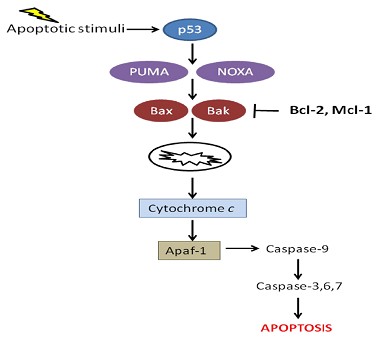 张四清 ZHANG Siqing, Ph. D.
张四清 ZHANG Siqing, Ph. D.
教授,博士生导师
肿瘤分子细胞生物学 (Cancer Biology)
课题组组长
电 话:13950197818
E-mail: siqing_zhang@yahoo.com
1981-1985,北京大学,理学学士
1985-1988,北京大学,理学硕士
1991-1995,北京师范大学,分子细胞生物学博士
1997-2000,以色列魏茨曼研究所,博士后
2000-2006,美国哈佛大学医学院,博士后
2006年至今,厦门大学生命科学学院,教授
1985, BSc.,
1988, MSc.,
1995, Ph.D.,
1997-2000, Postdoctoral fellow at the Weizmann Institute of Sciences in
2000-2006, Postdoctoral fellow at the
2006-Present, Professor of Molecular Biology, School of Life Sciences,
研究领域(Research Areas)
肿瘤分子细胞生物学。本实验室研究的方向主要包括细胞周期调控,癌基因和抑癌基因以及细胞程序性死亡在癌症发生中的作用。肿瘤已经成为中国第一死亡杀手,在全世界也是仅次于心血管疾病的第二死亡杀手。我们从位于细胞膜上的细胞感知生长因子和肿瘤坏死因子的受体开始,从基因和蛋白的水平上研究这些因子结合受体后,如何由外向内从细胞膜到细胞质及细胞核传递细胞生长和死亡信号;信号蛋白怎样和周期蛋白和周期蛋白依赖性激酶(cyclins and CDKs)组成的细胞周期调控分子系统对话;以及Rb和p53等抑癌基因通过阻断细胞周期和诱导肿瘤细胞凋亡,从而抑制癌细胞生长的机理。目前阶段,本实验室的工作主要集中在细胞程序性死亡或细胞凋亡(Apoptosis or programmed cell death)的机制及在肿瘤发生中的作用。细胞程序性死亡主要有两种途径。一条途径通过位于细胞膜上的死亡受体(肿瘤坏死因子受体,TNFR)及相关蛋白诱导。此途径通过激活TRADD,FADD,RIP等蛋白分子最终导致Caspase-8和 Caspase-3, 6, 7的活化而引起细胞的凋亡。TNFR 信号通路同时激活转录因子NF-κB。NF-κB转录一系列细胞保护性基因而抵抗和平衡由Caspases引起的细胞凋亡。许多肿瘤细胞中由于突变NF-κB活性而大大增强,使得肿瘤细胞不再响应细胞凋亡信号。细胞程序性死亡的另一条途径通过Bcl-2蛋白家族诱导。抑癌基因p53通过转录活化某些Bcl-2家族成员像Noxa, Puma等而引起肿瘤细胞凋亡,抑制癌细胞生长。在大多数类型的肿瘤细胞中p53基因发生了突变。细胞失去了重要的抑癌基因p53的保护,从而导致肿瘤细胞逃脱了细胞程序性死亡的机制,使癌细胞获得了抵抗放疗和化疗药物杀伤的能力,转移并最终发生形成肿瘤。研究细胞程序性死亡的机制及在肿瘤细胞中的变化,将对了解肿瘤的发生机理和肿瘤的治疗具有重要意义。利用小分子化合物和多肽特异地激活肿瘤细胞中的细胞凋亡分子系统,已成为未来肿瘤治疗中非常有前景的靶向治疗方法,也是近年来国际上众多研究机构和制药公司激烈竞争的领域。

Our Laboratory is interested in understanding the molecular basis of DNA damage stress induced signal transduction in normal and cancer cells. In particular, we are interested in studying DNA damage induced apoptosis regulation and its role in tumorigenesis. Evasion from apoptosis is a hallmark of cancer. We concentrate our efforts on the Bcl-2 family proteins. Bcl-2 family proteins are central mediators of apoptosis. We are trying to understand how growth factor signaling and the tumor suppressor p53 regulate the activities of the Bcl-2 family proteins. We are utilizing a variety of biochemical, cell biological and RNAi-based approaches to identify new Bcl-2 family interacting proteins and characterizing how these proteins contribute to the regulation of cell death and/or cell survival. We are also determining the mechanism by which cell signaling regulates the gene expression and protein degradation of some members of the Bcl-2 family proteins.
代表性论文(Selected Publications)
1. Hou J, Wang T, Xie Q, Deng W, Yang JY, Zhang SQ, Cai JC. N-Myc-interacting protein (NMI) negatively regulates epithelial-mesenchymal transition by inhibiting the acetylation of NF-κB/p65. Cancer Letters 376 (2016) 22-33.
2. Zhao XM, Chen Z, Zhao JB, Zhang PP, Pu YF, Jiang SH, Hou JJ, Cui YM, Jia XL, Zhang SQ. Hsp90 modulates the stability of MLKL and is required for TNF-induced necroptosis. Cell Death and Disease (2016) 7, e2089; doi:10.1038/cddis.2015.390. Published online 11 February 2016.
3. Li Z, Hou J, Sun L, Wen T, Wang L, Zhao X, Xie Q, Zhang SQ. NMI mediates transcription-independent ARF regulation in response to cellular stresses. Mol Biol Cell. 2012 Dec;23(23):4635-46. doi: 10.1091/mbc.E12-04-0304. Epub 2012 Oct 3.
4. Si Qing Zhang, Wentian Yang, Maria I. Kontaridis, Trever G. Bivona, Gengyun Wen, Toshiyuki Araki, Jincai Luo, Julie A. Thompson, Burkhart L. Schraven, Mark R. Philips, & Benjamin G. Neel (2004). Shp2 regulates Src family kinase activity and Ras/Erk activation by controlling Csk recruitment. Mol. Cell 13, 341-355.
5. Si Qing Zhang, William G. Tsiaras, Toshiyuki Araki, Gengyun Wen, Liliana Minichiello, Ruediger Klein, & Benjamin G. Neel (2002). Receptor-Specific Regulation of PI-3K Activation by the Protein-Tyrosine Phosphatase Shp2. Mol. Cell. Biol. 22, 4062-4072.
6. Si Qing Zhang, Andrew Kovalenko, Giuseppina Cantarella & David Wallach (2000). Recruitment of the IKK Signalosome to the p55 TNF Receptor: RIP and A20 Bind to NEMO (IKKg) upon Receptor Stimulation. Immunity 12, 301-311.
7. Wallach D, Arumugam TU, Boldin MP, Cantarella G, Ganesh KA, Goltsev Y, Goncharov TM, Kovalenko AV, Rajput A, Varfolomeev EE, Zhang SQ (2002). How are the regulators regulated? The search for mechanisms that impose specificity on induction of cell death and NF-kappaB activation by members of the TNF/NGF receptor family. Arthritis Res 4, Suppl 3:S189-96.
8. Si Qing Zhang & Benjamin G. Neel (2001). Shp2 regulates the relocalization of Gab1 in EGF signaling pathway. Tyrosine Phosphorylation & Cell Signaling, Cold Spring Harbor Laboratory, New York, USA.
9. Zhang SQ, Zheng DX, Liu SL, Zheng P, Min JM, Zhang LH (1998). 8-Chloroadenosine induces various tumor cell death by apoptosis. Chin. J. Oncol. 20 (2): 88-89.
10. Zhang SQ, Zhao S, Min JM, Wang K, Liu SL, Zheng DX (1998). Z-ajoene induces tumor cell death by apoptosis. Chin. Sci. Bulletin 43 (9): 961-964.
11. Zhang, S. Q. & Zheng, D. X. (1996). Organosulfur compound z-ajoene from garlic extract induced apoptosis in various human tumor cell lines. The International Symposium on Programmed Cell Death, Shanghai, China.
12. Zhang, S. Q. & Wang, Y. C. (1996). Cell cycle regulation. In 'Progress in Cell Biology' Ed. by Zhai Zhong He and Wang Yong Chao. Peking University Press, Beijing, China. pp49-63.
13. Zhang, S. Q. & Wang, Y. C. (1994). Control of cell cycle. In 'Achievements in Cell Biology' Ed. by Wang Ya Hui and Zhai Zhong He. Shanghai Science and Technology Press, Shanghai, China. pp.37-50.